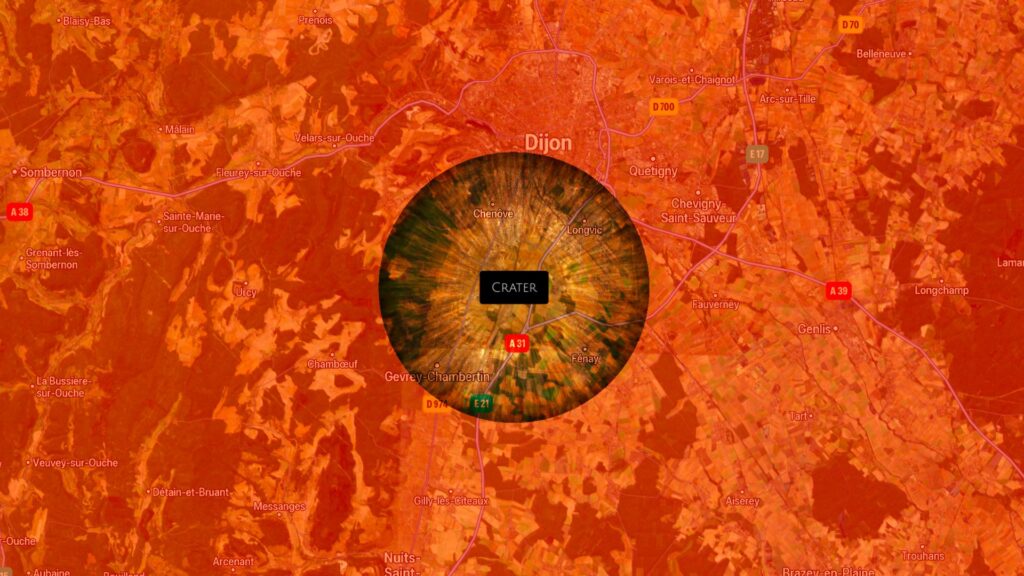It’s a classic disaster scenario: what would happen if a dangerous asteroid threatened Earth with a devastating impact? The reality is reassuring: there is little chance that humanity will be taken by surprise, given our level of surveillance, to which are added protection techniques currently being developed.
We’re starting to get used to it: as soon as an asteroid passes through the region, the headlines are the same, namely that “a dangerous asteroid could threaten Earth”. In reality, they are not dangers — they pass tens or hundreds of thousands of kilometers from our planet. But, let’s admit: if an asteroid really turned out to be threatening, what would happen? How would the alert be managed by an agency such as NASA?
This is the question that Business Insider asked on February 17, 2023, Lindley Johnson, director of NASA’s Planetary Defense Coordination Office — the office of the American space agency dedicated to the issue of near-Earth objects (asteroids, comets). Answer: an established, very strict procedure is followed in the event of the slightest doubt.
“I don’t have a red phone”
“ I don’t have a red phone on my desk or anything like that », laughs Lindley Johnson. “ But we have formal procedures for notifying a serious impact. »

At the origin of the initial alert, it would be the International Asteroid Warning Network (or IAWN). This organization, created in 2013 after a recommendation from the United Nations, brings together astronomers from around the world. If some of them detect a risk, the other members must verify: this helps to eliminate an error or misinterpretation. It would only be if the detection were to be confirmed by this collegial process that the alert would be given by NASA.
An asteroid is considered a potentially serious danger if it exceeds 140 meters in diameter (from 500 meters, it could level a city like Paris), and if it passes 0.5 astronomical units from the Earth, i.e. the half the Earth-Sun distance. To date, some 34,000 asteroids have been identified near our planet, of which 2,700 are believed to be at risk. However, it is possible to predict their orbit up to a hundred years in advance, and none are currently threatening (there is only a 1 in 2,700 chance that the asteroid Bennu will hit Earth in 159 years…). The IAWN is also responsible for searching for and listing new ones — because we know that the census remains incomplete.
What would happen if an asteroid really threatened Earth?
If an asteroid strike is imminent, it would more likely be on a scale of years, in which case NASA is prepared. There are two possibilities. If the threat is national (on American soil), the space agency must notify the White House. If the threat is international, NASA must alert the United Nations Office for Outer Space Affairs.
“That gives us plenty of time to try to do something.”
To manage the situation, in any case, implementing a planetary defense plan would take 5 to 10 years, according to Lindley Johnson. A deadline that seems reasonable, given the predictability of such an event. Several possibilities :
- With a period of 10 years, it would be possible to simply divert the asteroid’s orbit. In 2022, the DART ship was deliberately crashed into the asteroid Dimorphos to divert its course. It was a test, Dimorphos posing no real danger, carried out successfully. There are several other avenues in deflection methods: gravitational traction or even ion beams.
- With a period of 5 years, the diversion would be too difficult to implement, according to Johnson. Destruction would then be the outcome: by exploding the asteroid while it is still at a good distance, this would disperse the risks.
- With a deadline of 6 months, it would be much more complicated to make it have a trivial impact; the danger would be very real. Because it takes time to determine the nature of the asteroid, then to choose a solution, then to implement this solution. But this disaster scenario worthy of Don’t Look Up is particularly improbable. Once again, tracking near-Earth objects near our planet offers a valuable advance. “ This gives us plenty of time to try to do something about them while they’re still in space, to prevent any catastrophe on Earth. », Concludes Johnson to Business Insider.


Moreover, a satellite called NEO Surveyor must be launched in 2027. The objective: to identify, using the mid-infrared spectrum, the asteroids that are most difficult to detect from Earth. With this new asset up its sleeve, NASA will ensure with even greater certainty that it has all the time necessary to manage a “planetary defense” situation.
In short, the Earth is relatively ready: if an asteroid threatens us, we would have time and techniques to get out of it. We are a long way from disaster films or alarmist headlines.


Do you want to know everything about the mobility of tomorrow, from electric cars to e-bikes? Subscribe now to our Watt Else newsletter!
